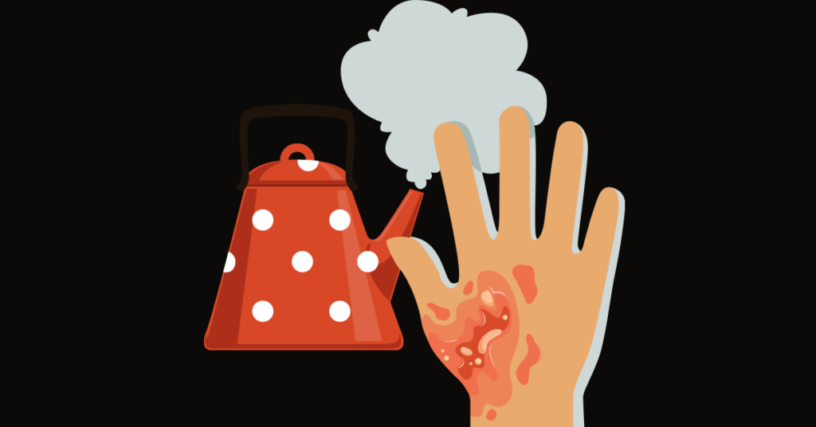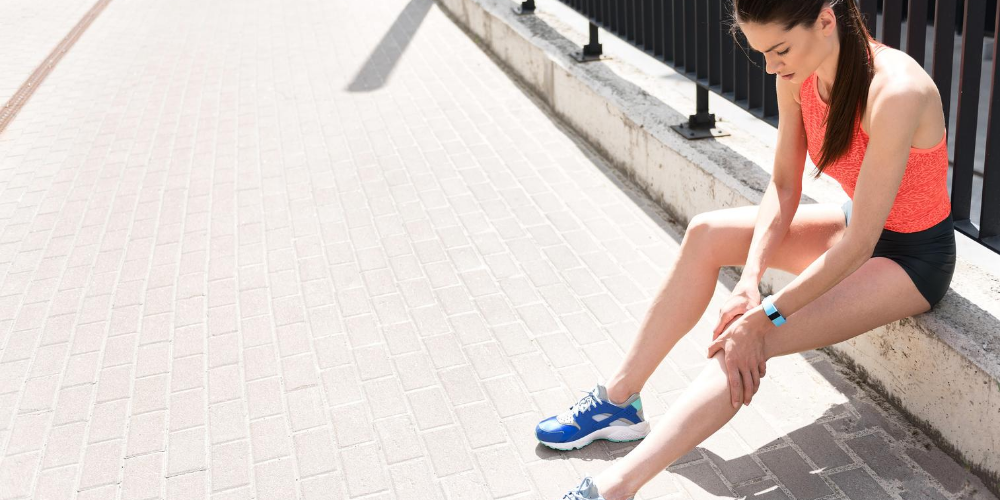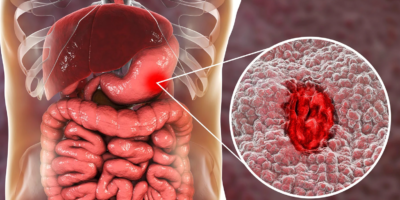Most anyone who spends much time in the kitchen or out in the sun has experienced a burn. Causes of burns include ultraviolet light, hot liquids, fire, electricity, and chemicals. Although the skin is normally involved, hot liquids can burn the mouth and throat; inhalation of smoke and some chemicals can burn the lungs. If a first- or second-degree burn occurs, swiftly remove the skin from the source of heat. Plunge the area into cool water for five minutes. If clothing can’t be quickly removed (or is stuck to the skin), thrust it into the water, too. Afterward, wash the area with mild soap and water and cover with sterile gauze. Remove any constricting jewelry from the area. If arms or legs are involved, elevate to about the level of the heart.


1. Aloe-ah Burns
How it works: Aloe vera gel inhibits pain-producing substances. It is anti-inflammatory, promotes circulation, and inhibits bacteria and fungi. Studies show that it speeds the healing of burns and wounds, improves psoriasis, and enhances tissue survival after frostbite. Although not all studies have been positive, cumulative research does indicate that topical aloe gel benefits first- and second-degree burns. Lavender essential oil is anti-inflammatory, pain-relieving, antibacterial, and antifungal.
- PREPARATION:
- 1 tablespoon (15 g) Aloe vera gel (Look for a product that’s at least 90 percent aloe.)
- 10 drops lavender essential oil
- DIRECTIONS: Blend the aloe gel and essential oil to make a paste. Apply the paste as needed to the burn.
- YIELD: SEVERAL APPLICATIONS FOR A SMALL BURN
2. Sweet Soother
How it works: Honey is an ancient wound healer. Scientific studies show it’s antibacterial and speeds healing of burns on par with the more conventional burn dressings containing silver sulfadiazine.
- PREPARATION: Honey (a fresh, uncontaminated jar)
- DIRECTIONS: With a clean butter knife, spread the honey on a piece of sterile gauze large enough to cover the burn. Tape the edges of the gauze in place so that the bandage is comfortable—not too tight across the burn. Every 6 hours, gently wash the skin and change the dressing.
- YIELD: 01 APPLICATION
- NOTE: Manuka honey is especially effective if you are concerned about skin infection. (It is available at health food stores and is expensive.) Alternatively, mix a teaspoon of honey with a teaspoon of Aloe vera gel and apply it to the gauze. You’ll get double the healing action.
3. Tea-Total Compress
How it works:
Tea compresses are a time-honored treatment for sunburns. Tea (Camellia sinensis) is anti-inflammatory, antioxidant, antibacterial, and astringent (contracts the skin). Green tea has captured more of the research than has black tea (which is darker due to further processing).
Relative to black tea, green tea has stronger antioxidant and antibacterial effects. Experiments show green tea extracts applied to the skin provide some protection against the detrimental effects of ultraviolet light. Consuming green tea does, too. Although it protects against skin damage from solar radiation, topical green tea extract appears to be more effective when applied before, rather than after, sunburn. German chamomile (Matricaria recutita) is antioxidant, anti-inflammatory, antimicrobial, and wound healing. Lab experiments show it improved the healing of burns and other wounds.
- PREPARATION:
- ½ cup (120 ml) boiling water
- Green or black tea bag (chamomile is a favorite)
- DIRECTIONS: Pour the boiling water into a cup. Dunk your teabag of choice. Steep and let cool to room temperature. Dip the clean cloth into the tea and apply to the burn.
- YIELD: 01 APPLICATION
- NOTE: Alternatively, apply the cooled tea bag directly to the irritated skin.
4. Lavender Soothe-sayer
How it works: The essential oil made from the lavender flower relieves discomfort and reduces inflammation. Studies also show improved healing of surgical wounds.
- PREPARATION: 2 drops lavender essential oil
- DIRECTIONS: Smooth the essential oil over the burned area.
- YIELD: 01 APPLICATION
- NOTE: Essential oils are not true oils. Do not apply true oils, such as olive, almond, or vegetable oils to burned skin until the burn has fully resolved.
5. Onion Poultice
How it works: The juice of an onion is a disinfectant. The coolness of an onion slice can also draw out heat. Raw, cool potato slices have been used to relieve burned skin, but there is no evidence-based research to support why.
- PREPARATION:
- ½ freshly cut onion, diced
- ½ teaspoon salt
- DIRECTIONS: Mash the onion pieces with salt or blend in a food processor. Apply the mixture directly to the burn, and then wrap with clean muslin.
- YIELD: 01 APPLICATION
- NOTE: As a quick alternative, apply a slice of freshly cut onion or potato directly to the burned area for 15 minutes to draw out the heat.
6. Oat Balm
How it works: Oatmeal is soothing to burned skin. The gooeyness comes from a polysaccharide (complex sugar) called beta-glucan. It helps protect and hold water in the skin. Other compounds called phenols have antioxidant and anti-inflammatory activity.
- PREPARATION:
- 6 tablespoons (30 g) rolled oats
- ¾ cup (175 ml) water
- DIRECTIONS: Combine the oats and water in a microwave-safe bowl. Microwave on high for 2 minutes or until cooked. Let cool. Cover the burned area with the cooled oat mixture. Wrap in clean muslin or gauze and keep it in place for 30 minutes to an hour.
- YIELD: 01 APPLICATION
- NOTE: Alternatively, in a coffee mill or food processor, grind ½ cup (40 g) of rolled oats to a powder and add to a tepid bath. If you don’t want to grind the oats, put them in a sock and tie the top to avoid clogging your drain. Swish the sock around for 5 minutes before you step into the bathtub.
7. Calendula Tincture
How it works: The calendula flower is antiseptic and helps heal wounds. It is also anti-inflammatory and cooling, which soothes a burn.
- PREPARATION:
- 2 teaspoons (1 g) dried calendula flowers (also called pot marigold, available at a natural food store)
- 1 cup (235 ml) boiling water
- DIRECTIONS: Steep the calendula flowers in the boiling water for 10 minutes. Strain and let cool. Apply to the burn with a clean cloth. Repeat as often as possible.
- YIELD: 01 OR MORE APPLICATION
8. Green Tea Cocktail
How it works: As noted earlier, science touts green tea for its antibacterial, antioxidant, and anti-inflammatory properties. Although it can be topically applied to help guard the skin against the sun’s damaging rays, consuming green tea also helps provide protection against the detrimental effects of ultraviolet light.
- PREPARATION:
- 2 cups (275 ml) boiled water
- 2 teaspoons (4 g) green tea leaves
- 2 teaspoons (4 g) chopped fresh spearmint
- 1 teaspoon (14 g) honey
- 2 tablespoons (28 ml) fresh lime juice
- DIRECTIONS: Put the tea leaves in the boiled water to steep. Stir in the spearmint. Continue to steep for 15 minutes. Strain the tea and stir in the honey until dissolved. Chill the remaining liquid. Stir in the lime juice and serve.
- YIELD: 02 SERVINGS
Fact Or Myth?
- YOU SHOULD POP ANY BLISTERS THAT DEVELOP. Myth. Experts recommend leaving small blisters alone. Popping them risks introducing bacteria to the wound. If a blister is large and interferes with function, call your doctor.
- IF YOU’RE BURNED, APPLY BUTTER. Myth. Oily substances can retain heat. Cool water is the ticket. Also, butter, mayonnaise, and cooking oil may be contaminated with bacteria.
- IF YOU’RE BURNED, APPLY ICE. Myth. Prolonged contact with ice and ice water can further injure tissues and also may lead to hypothermia (abnormally low body temperature). If, on the other hand, you burn your hand in the kitchen, dunking it for 1 to 5 minutes into a cup of ice water is fine.
Lifestyle Tip
- Once a burn has cooled down and begins to heal, cover it with an herbal salve to help reduce dryness and promote healing. Don’t apply it too soon. If the burn is still warm, the salve will lock in heat and could increase damage to the skin.
- For sunburns, try a cream or gel with menthol or camphor. Either will help take the sting away.
- After a sunburn, use a moisturizer to lubricate areas where the burn will rub against skin or clothes.
When to call the Doctor
- A chemical burned your eye.
- The burn involves your face, hands, feet, genitals, throat, or joint. (If minor sunburn affects the face, hands, or feet, you can probably manage with home care.)
- A second-degree burn is larger than the size of your hand.
- Smoke was inhaled.
- You’re concerned the wound might be becoming infected (as evidenced by purulent discharge, swollen lymph nodes in the area, or increased redness and pain).
- The burn victim is an infant.






Leave a Reply